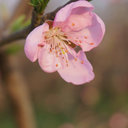Antioxidant effects of hydroxysafflor yellow A and acetyl-11-keto-β-boswellic acid in combination on isoproterenol-induced myocardial injury in rats.
Ключови думи
Резюме
Oxidative stress plays an important role in the initiation and development of myocardial injury (MI). The peroxisome proliferator-activated receptor gamma coactivator-1α (PGC‑1α)/nuclear factor erythroid 2-related factor 2 (Nrf2) pathway is considered to be a potential target for cardioprotection in MI. Acetyl-11-keto-β-boswellic acid (AKBA) is the major organic acid component extracted from Boswellia serrata Roxb. ex Colebr. Hydroxysafflor yellow A (HSYA) is the principal active constituent of Carthamus tinctorius L. In the present study, we aimed to investigate the cardioprotective effects of HSYA and AKBA in combination in vivo and in vitro, as well as the underlying mechanisms responsible for these effects. For this purpose, MI was produced in Sprague-Dawley rats by subcutaneous injection with isoproterenol. To model ischemic-like conditions in vitro, H9C2 cells were subjected to oxygen-glucose deprivation (OGD). The levels of creatine kinase-MB (CK‑MB), lactate dehydrogenase (LDH), malondialdehyde (MDA) as well as superoxide dismutase (SOD) activity were examined as well as apoptotic cell death. Mitochondrial reactive oxygen species (ROS) production and mitochondrial membrane potential (ΔΨm or MMP) were measured using MitoSOX Red and 5,5',6,6'-tetraethylbenzimidazolylcarbocyanine iodide (JC-1) dye. The expression of PGC-1α and Nrf2 was quantified by western blot analysis and immunohistochemistry. HSYA and AKBA prevented myocardial pathological changes, significantly reduced the blood levels of CK-MB and LDH, and decreased apoptotic cell death. They significantly increased the expression of PGC-1α and Nrf2, and the activity of the antioxidant enzyme SOD and also decreased the levels of MDA and ROS. Moreover, the reduction in MMP was partly prevented by HSYA and AKBA. Taken together, these findings elucidate the underlying mechanisms through which HSYA and AKBA protect against MI. Additionally, HSYA and AKBA appear to act synergistically in order to exert cardioprotective effects.







